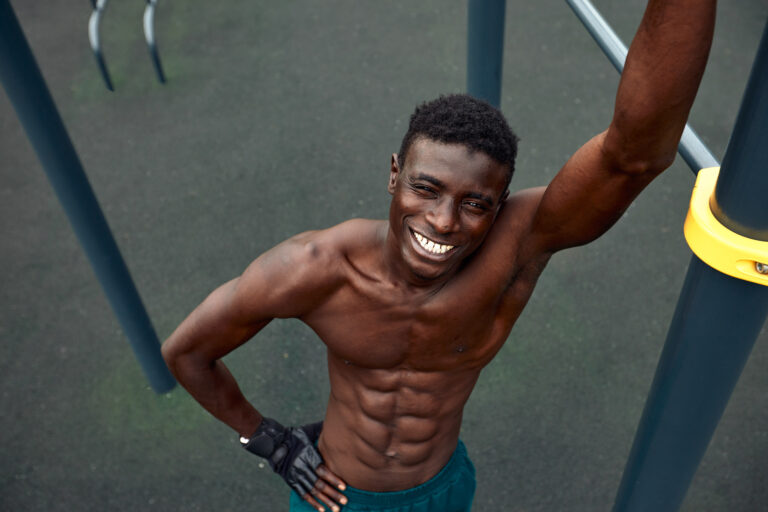What is the Erector Spinae?
The erector spinae muscles are crucial to the musculoskeletal system, playing an integral role in maintaining posture, enabling movement, and providing spinal stability. Comprising three primary muscles—iliocostalis, longissimus, and spinalis—these muscles extend along the vertebral column from the sacrum to the skull. Their health and functionality are vital for athletes and individuals engaged in physical activities, as well as for everyday tasks that require bending, lifting, and maintaining an upright posture. Understanding the anatomy, biomechanics, and common issues related to the erector spinae can help in preventing injuries and enhancing physical performance.
Anatomy and Function
Iliocostalis
The iliocostalis muscle, the most lateral part of the erector spinae group, is divided into three parts: iliocostalis lumborum, iliocostalis thoracis, and iliocostalis cervicis. Originating from the iliac crest, sacrum, and lumbar vertebrae, the iliocostalis lumborum extends to the lower ribs. The iliocostalis thoracis runs from the lower ribs to the upper ribs, while the iliocostalis cervicis extends from the upper ribs to the cervical vertebrae. These muscles are responsible for lateral flexion of the spine, aiding in side bending movements, and help in maintaining an erect posture. The iliocostalis muscles also play a role in extending the vertebral column when contracting bilaterally.
Longissimus
The longissimus muscle is the longest component of the erector spinae, extending from the lumbar region to the skull. It is divided into three parts: longissimus thoracis, longissimus cervicis, and longissimus capitis. The longissimus thoracis originates from the sacrum, lumbar vertebrae, and thoracolumbar fascia, extending to the thoracic vertebrae and ribs. The longissimus cervicis runs from the thoracic vertebrae to the cervical vertebrae, while the longissimus capitis extends from the cervical vertebrae to the mastoid process of the skull. This muscle group is essential for extending the spine, lateral flexion, and rotating the head and neck. Its extensive range of action highlights its importance in various physical activities, from everyday movements to athletic performance.
Spinalis
The spinalis muscle, the most medial part of the erector spinae, lies closest to the spine and is divided into spinalis thoracis, spinalis cervicis, and spinalis capitis. The spinalis thoracis originates from the lower thoracic and upper lumbar vertebrae, extending to the upper thoracic vertebrae. The spinalis cervicis runs from the lower cervical to the upper cervical vertebrae, while the spinalis capitis extends from the cervical vertebrae to the occipital bone of the skull. This muscle group primarily functions to extend the vertebral column and maintain posture. Though smaller and less prominent than the iliocostalis and longissimus, the spinalis muscles are crucial for stabilizing the spine during movement and providing support for the upper body.
Biomechanics of the Erector Spinae
The erector spinae muscles work in harmony to facilitate a wide range of movements and maintain spinal stability. During activities such as lifting, bending, and twisting, these muscles coordinate with the abdominal muscles, hip flexors, and gluteal muscles to produce controlled and efficient movements. When lifting an object from the ground, the erector spinae muscles engage to extend the spine, counteracting the forward bending motion and preventing excessive strain on the lower back.
In addition to their role in dynamic movements, the erector spinae muscles are vital for maintaining static postures. For instance, when standing or sitting for prolonged periods, these muscles continuously contract to support the spine and prevent it from collapsing into a flexed position. This constant activity helps distribute the load evenly across the vertebral column, reducing the risk of injury and discomfort.
The interplay between the erector spinae and other muscle groups is particularly evident in complex movements such as lifting weights. When performing a deadlift, for example, the erector spinae muscles work synergistically with the hamstrings and gluteal muscles to extend the hips and straighten the spine. This coordinated effort allows for the safe and effective lifting of heavy loads, emphasizing the importance of the erector spinae in both functional and athletic movements.
Common Injuries and Disorders
The erector spinae muscles are susceptible to various injuries and disorders, often resulting from overuse, improper technique, or sudden trauma. One common issue is muscle strain, which occurs when the muscle fibers are overstretched or torn. This can result from lifting heavy objects with poor form, sudden twisting movements, or repetitive stress from activities such as running or cycling. Symptoms of a muscle strain include localized pain, muscle spasms, and reduced range of motion.
Another prevalent condition affecting the erector spinae is lumbar sprain, which involves damage to the ligaments supporting the lower back. This can occur from similar mechanisms as muscle strains and may present with symptoms such as swelling, tenderness, and difficulty moving the lower back. Chronic conditions like spondylosis, a degenerative disorder affecting the intervertebral discs and vertebrae, can also impact the erector spinae. This condition often leads to stiffness, pain, and reduced flexibility, significantly affecting an individual’s quality of life.
Preventing injuries to the erector spinae involves proper technique during physical activities, adequate warm-up and stretching routines, and maintaining overall physical fitness. Understanding the signs and symptoms of common injuries can help in seeking timely medical intervention and implementing appropriate rehabilitation strategies.
Preventive Measures and Therapeutic Exercises
Preventing injuries to the erector spinae muscles requires a multifaceted approach that includes proper technique, ergonomic adjustments, and specific exercises designed to strengthen and maintain muscle health. One of the most effective strategies is ensuring correct posture and movement patterns during daily activities and exercise routines. For example, when lifting objects, it is crucial to use the legs to bear the load rather than the lower back, keeping the spine in a neutral position and avoiding excessive bending or twisting.
Engaging in regular strength training exercises that target the erector spinae can significantly enhance their resilience and functionality. Deadlifts, back extensions, and good mornings are excellent exercises for developing the strength and endurance of these muscles. Additionally, incorporating core strengthening exercises, such as planks and bird-dogs, can provide further support to the spine and reduce the risk of injury.
Stretching routines are equally important in maintaining the flexibility and health of the erector spinae muscles. Static stretches, such as the seated forward bend and the child’s pose, can help elongate the muscles and relieve tension. Dynamic stretches, like cat-cow movements and torso rotations, can also be beneficial in preparing the muscles for physical activity and preventing stiffness.
Ergonomic adjustments in the workplace and home environment can also play a significant role in preventing erector spinae injuries. Ensuring that workstations are set up to promote good posture, with computer screens at eye level and chairs that provide adequate lumbar support, can reduce the strain on the lower back. Additionally, taking regular breaks to stand, stretch, and move around can help alleviate the cumulative stress placed on the erector spinae muscles during prolonged periods of sitting or standing.
Role in Fitness and Athletic Performance
The erector spinae muscles are essential for athletes and fitness enthusiasts, as they contribute to a wide range of movements and provide the necessary support for various physical activities. In sports that require dynamic and explosive movements, such as weightlifting, gymnastics, and martial arts, the strength and stability of the erector spinae are crucial for optimal performance and injury prevention.
For example, in weightlifting, exercises like the squat and deadlift heavily rely on the erector spinae for spinal stability and proper execution. A strong and well-conditioned erector spinae can enhance an athlete’s ability to lift heavier weights with correct form, reducing the risk of injury to the lower back. Similarly, in gymnastics, where athletes perform complex maneuvers involving flips, twists, and holds, the erector spinae provide the necessary support and control to execute these movements safely and effectively.
In endurance sports such as running and cycling, the erector spinae play a vital role in maintaining posture and reducing fatigue. A well-conditioned erector spinae helps runners and cyclists maintain an upright posture, reducing the risk of developing back pain and improving overall efficiency. Additionally, the erector spinae’s endurance capacity can contribute to better performance and reduced fatigue during long-distance events.
Athletes often incorporate specific training regimens to target the erector spinae, focusing on both strength and endurance. Progressive resistance training, incorporating various exercises and gradually increasing the load, can help in building the strength and resilience of these muscles. Incorporating plyometric exercises, such as box jumps and medicine ball throws, can also enhance the explosive power of the erector spinae, benefiting athletes in sports that require quick and powerful movements.
Key Takeaways
The erector spinae muscles, including the iliocostalis, longissimus, and spinalis, are essential for maintaining posture, enabling movement, and providing spinal stability. Understanding their anatomy, biomechanics, and common issues is crucial for preventing injuries and enhancing physical performance. Regular strength training, proper technique, and ergonomic adjustments can help maintain the health and functionality of these muscles, ensuring they support a wide range of activities and contribute to overall well-being.









